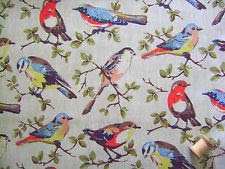To start the brief I looked into the appearance of the already existing Cath Kidston prints, I wanted to see what had been done and how...
At first I started by listing 'british' things. I did this from my own ideas of what I think is british and what I think is stereotyped as being british. I wanted to focus on positive ideas. I then also searched british stereotypes, a lot of came up where mannerisms, and negative ideas. And so I went from my own ideas.
I thought about british landscapes, Britain has a lot of green land and a lot of forests, and I personally have grown up walking around these types of areas frequently and I still like to go walking now. I also like nature and in particular animals. And so I looked at british wildlife and a few animals that I knew came up and others I didn't.
- Rabbits
- Foxes
- Squirrels (even though the red squirrel is english, the common grey squirrel we see now where actually imported unintentional by America, when ships traded.)
- Deer
- Stoat
- Badgers
- Owls
- Vole
- Hedgehog
I also looked at the nature, i.e forests and woods. And some of the trees that exist and grow in these areas.
I then thought about tea, tea is known to be quite a british thing and then I then thought further about tea, and I thought about afternoon tea, e.g. tea and cake his is also quite a British thing, it is also mainly women that do this, in the sense on going to a tea room like Betty's.
Tea Parties
Can be indoor and outdoor. As I had thought about British wildlife I felt that I would like to portray an outdoor garden party, as Britain is also known for its green landscape and fields. As well as this the non of the Cath Kidston prints are green.
The afternoon tea party was a feature of great houses in the Victorian andEdwardian ages in the United Kingdom and the Gilded Age in the United States, as well as in all continental Europe (France, Germany, and above all in the Russian Empire). The formal tea party still survives as a special event, as in the debutante teas of some affluent American communities.
Formal tea parties are often characterized by the use of prestige utensils, such as porcelain, bone china or silver. The table is made to look its prettiest, with cloth napkins and matching cups and plates. In addition to tea, larger parties may provide punch, or in cold weather, hot chocolate. The tea is accompanied by a variety of foods that are easy to manage while in a sitting room: thin sandwiches, such as cucumber or tomato, cake slices, buns or rolls, cookies, biscuits andscones are all common.
And so I looked at basic elements of a tea party and I looked at the set up and aesthetic of a tea party. More elaborate parties like the ones I have looked at are really excentuate the theme. The aesthetic is quite vintage , mainly white china, and pink roses- roses also being typically English. Floral and dainty.
I then further noticed when searching tea party, the tea party in the book Alice in Wonderland appears frequently.
Alice's Adventures in Wonderland (commonly shortened to Alice in Wonderland) is an 1865 novel written by English author Charles Lutwidge Dodgson under the pseudonym Lewis Carroll.
In the chapter "A Mad Tea-Party" in Alice's Adventures in Wonderland, Alice becomes a guest at a tea party along with the March Hare, the Hatter, and a sleeping Dormouse who remains asleep for most of the chapter. The other characters give Alice many riddles and stories, including the famous 'Why is a raven like a writing desk?'. The Hatter reveals that they have tea all day because time has punished him by eternally standing still at 6 pm (tea time). Alice becomes insulted and tired of being bombarded with riddles and she leaves claiming that it was the stupidest tea party that she had ever been to.
Again this is inherently British. And so fits along the guidelines of the brief.
This theme could also be quite interesting as a print as it is almost quite surreal.
However I think that the surreal -ness of this theme may not be appealing to the target audience as well as this I can not visualise a set pattern.
And so I decided to use the garden tea party.









































No comments:
Post a Comment